The following circuit is taken from The Art of Electronics book.
Assuming the base-emitter voltage drop of 0.6V for both the transistors, the C1 charges to approximately 4.4V (left-to-right) when the input is low. When the input goes high, the collector of T1 as well as the left plate of the capacitor are pulled to .6V, resulting in right plate going to about -4.4V for a brief period. How can I calculate the pulse width at the output?
I guess the formula to find out the pulse width is
$$ v_c(t) = V_s + \left[ v_c(t_0) - V_s \right] e^{-\dfrac{t-t_0}{RC}}, \quad t\ge t_0. $$ where $$ RC = R3C1 = 100us. $$
EDIT: Waveforms added


